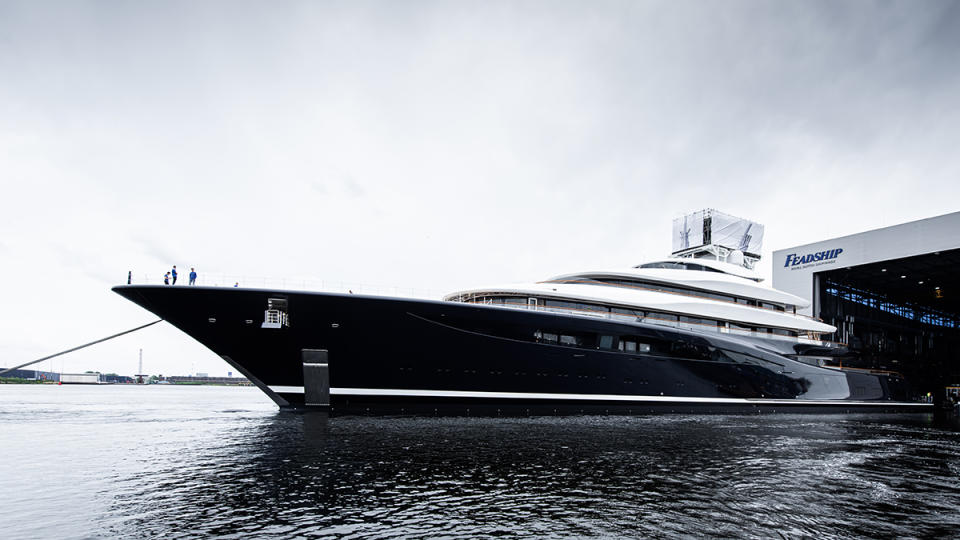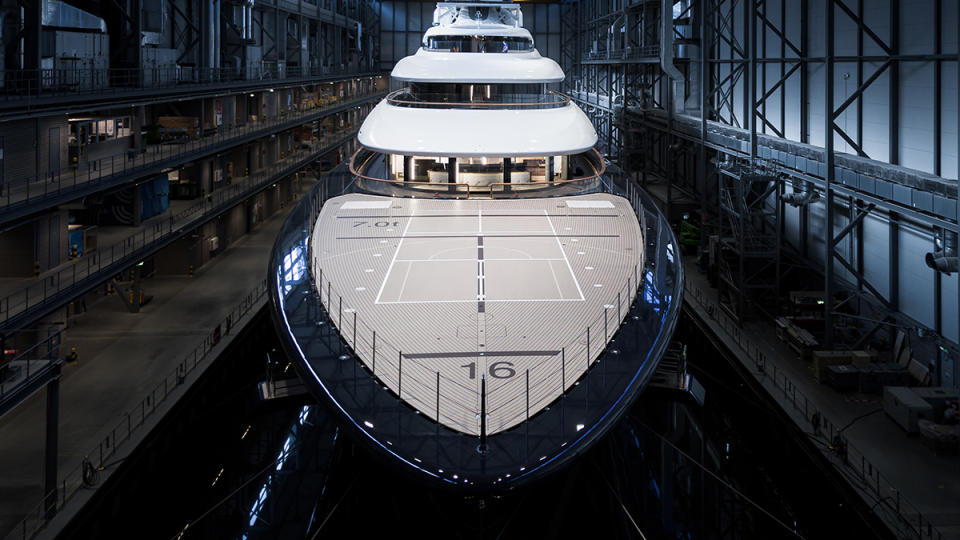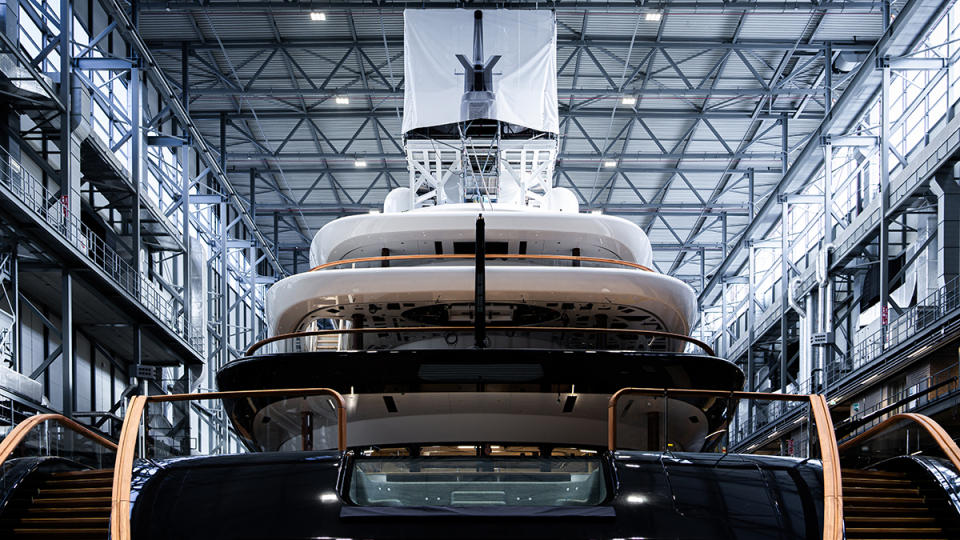The World’s First Hydrogen-Powered Superyacht Just Hit the Water

A hydrogen-powered superyacht may sound like a far-off sci-fi fantasy, but Feadship has made it a reality.
The Dutch shipyard just launched what it claims is the first superyacht in the world to feature hydrogen fuel cells. Project 821 left Feadship’s Amsterdam shipyard on May 4, marking an important new chapter for the yard and the industry at large.
More from Robb Report
This New 144-Foot Superyacht Wants to Be the SUV of the High Seas
This 180-Foot Trinity Superyacht Stars in the Newest Season of 'Below Deck Mediterranean'
This New 248-Foot Superyacht Has Its Own Sports Court on the Deck
“The aim has been to develop a new, clean technology not just for this project, but for the world,” Jan-Bart Verkuyl, Feadship director and CEO of Royal Van Lent, said in a statement.

Five years in the making, Project 821 is at the bleeding edge of marine innovation. Designed by British studio RWD, the vessel uses hydrogen to power both the propulsion system and hotel load to eliminate carbon emissions. The 290-footer is also the largest yacht built by Feadship to date, meaning it could easily hold the requisite fuel cells, battery banks, and hydrogen tanks.
For the unversed, fuel cells are a combustion-free way to generate electricity. The fuel cell turns hydrogen into electricity that can be used or stored in lithium-ion battery banks. The only emission is water vapor. The automotive and aerospace industries have already embraced fuel cells, but the marine sector had to overcome some design issues and safety regulations before incorporating the technology. How to store compressed liquid hydrogen below deck at -423.4 degrees Fahrenheit is one such hurdle Feadship had to overcome.

Hydrogen is light but must be held in large, cumbersome tanks. In fact, Feadship says it takes eight to 10 times more space to store the hydrogen than the equivalent in diesel fuel. In the case of Project 821, the yard added 13 feet to the vessel’s original length to accommodate a large tank that holds more than four tons of hydrogen, 16 compact fuel cells, and the vent stacks. Even a yacht of such proportions cannot carry enough liquid hydrogen to power a crossing, but there is enough to generate electricity for short trips and the hotel load. The fuel cell technology can provide an entire week’s worth of silent operation at anchor or allow the yacht to cruise emission-free at 10 knots for a short period.
“We have now shown that cryogenic storage of liquified hydrogen in the interior of a superyacht is a viable solution,” Verkuyl adds. “Future innovations on fuel cells and onboard reforming of methanol to hydrogen are on the near horizon.”

In instances when pure hydrogen is not an option, MTU generators running on HVO biofuel will send power to the 3,200 kW ABB pod drives. As you might expect, the yacht features an advanced energy management system that helps reduce power usage onboard.
Project 821 is by no means short on luxury, either. Showcasing an elegant, modern silhouette, the behemoth offers five decks above the waterline and two below. It also has the most hull openings of any vessel in the Feadship fleet, with 14 balconies, five shell doors, and seven fold-out platforms.
Penned by GA, the elegant interior pairs a neutral palette with textured fabrics to create a luxe coastal vibe. The epic owner’s deck is equipped with two bedrooms, dual bathrooms, twin dressing rooms, a gym, a pantry, two offices with fireplaces, a living room, and an outdoor terrace with a Jacuzzi. The owner can then take a private elevator to the coffee corner and games area on the bridge deck, the library on the main deck, or the private dining room. In this way, Project 821 evokes a four-level townhouse by the sea.
The best part? Project 821 is for sale with Edmiston.
Best of Robb Report
Sign up for Robb Report's Newsletter. For the latest news, follow us on Facebook, Twitter, and Instagram.

 Yahoo News
Yahoo News 
